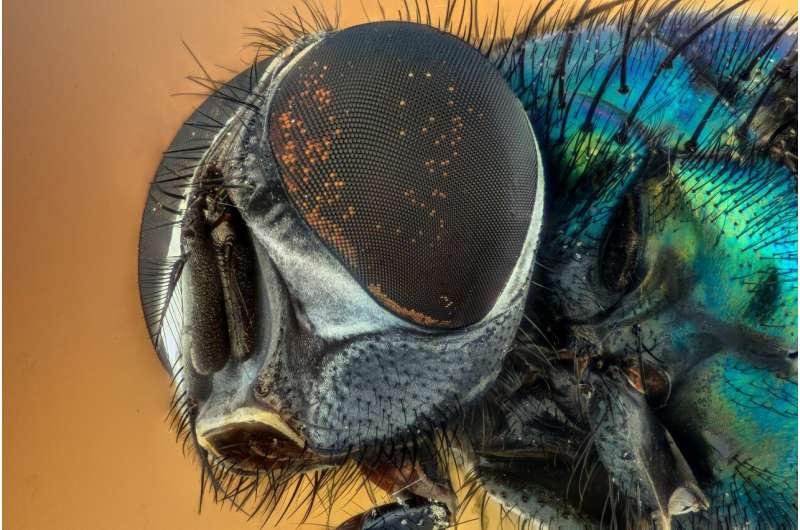Plants produce nutrient-rich substances for insects at night

A multidisciplinary team of researchers from the University of Valencia (UV), the Valencian Institute of Agricultural Research (IVIA) and Rutgers University (RU) has just demonstrated that guttation, small watery drops exudated from the margins of plants leaves, is a nutrient-rich food source for beneficial insects (pollinators or those used for biological pest control). The study has been published today in the journal Proceedings of the Royal Society B.
Guttation is a common phenomenon in many plant species that occurs at night when soil moisture is high. Insects such as bees, parasitoids or dipterans drink from these small drops that for a long time had been considered only a source of water for them.
The new study, in which the UV and IVIA have participated through the Joint Research Unit on Biotechnological Control of Pests, and Rutgers University (U.S.), shows clear evidence that plant guttation is rich in carbohydrates but also contains proteins that can be essential for many insect species. Insects from three distinct families and feeding lifestyles (i.e., an herbivore, a parasitic wasp, and a predator) increased their survival and reproductive capacity when they fed on guttation droplets during their entire adult life, under controlled conditions, says Pablo Urbaneja Bernat, researcher at Rutgers University.
The study, says Joel González-Cabrera, Ramón y Cajal researcher from the Institute of Biotechnology and Biomedicine (BIOTECMED), from the University of Valencia, "has important agronomic implications because in the field trial we have evidenced that plants with guttation droplets doubled the abundance of beneficial insects such as parasitic wasps and predators, those that protect the plants from pests."
"Therefore, the presence of guttation droplets might reduce the numerous problems caused by pests in crops, including invasive pests," mentioned Alejandro Tena, researcher at IVIA, who also pointed out that this process could occur in numerous crops where guttation is common such as rice, wheat, barley, rye, oats, sorghum, corn, tobacco, tomato, strawberry and cucumber, among others.
Another novelty of the study is that contrary to what might be expected, guttation was present in blueberry fields throughout the season. "This finding can be crucial for the conservation of beneficial insects such as parasitic wasps, predators and pollinators, since they can find and feed on guttation droplets when pollen or nectar from flowers are scarce," concludes Cesar Saona, who led the experiments at Rutgers University in the United States.
Overall, the data presented in the article provides the first evidence that plant guttation is an important but underexplored trait in plants with profound implications for their interactions with insects in managed and natural ecosystems. This research has been funded by the Ramón y Cajal program, as well as by several grants from the United States.
More information: Pablo Urbaneja-Bernat et al. Plant guttation provides nutrient-rich food for insects, Proceedings of the Royal Society B: Biological Sciences (2020). DOI: 10.1098/rspb.2020.1080
Journal information: Proceedings of the Royal Society B
Provided by Asociacion RUVID




















